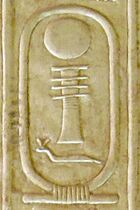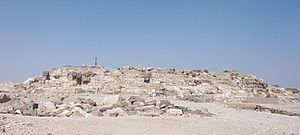Djedefre facts for kids
Quick facts for kids Djedefre |
|
|---|---|
| Djedefra, Radjedef, Ratoises, Rhampsinit, Rhauosis | |
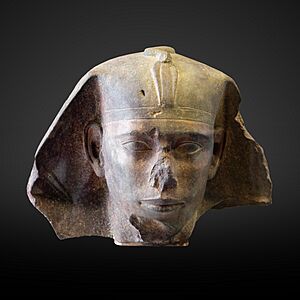
Quartzite head of Djedefre from Abu Rawash, Musée du Louvre
|
|
| Pharaoh | |
| Reign | 10 to 14 years, ca. 2575 BC (4th Dynasty) |
| Predecessor | Khufu |
| Successor | Khafre |
| Consort | Hetepheres II, Khentetka |
| Children | Setka, Baka, Hernet, Neferhetepes, Hetepheres ?, Nikaudjedefre ? |
| Father | Khufu |
| Burial | Pyramid of Djedefre |
| Monuments | Pyramid of Djedefre, Great Sphinx of Giza ? |
Djedefre (also known as Djedefra or Radjedef) was an ancient Egyptian king, or pharaoh. He ruled during the 4th Dynasty in the time known as the Old Kingdom. Djedefre was the son of Khufu, the pharaoh who built the famous Great Pyramid of Giza.
Djedefre was important because he was the first king to use the royal title Sa-Rê. This means "Son of Ra," connecting his name directly to the powerful sun god Ra.
Who Was Djedefre's Family?
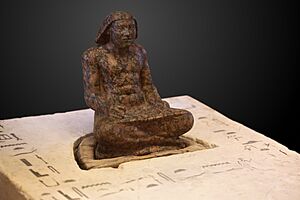
Djedefre married Hetepheres II, who was his half-sister. She had also been married to his brother, Kawab. It's possible she later married another brother, Khafre, after Djedefre passed away. Another queen of Djedefre was Khentetenka. We know about her from pieces of statues found near his pyramid.
Djedefre had several children:
- Hornit: He was known as the "Eldest King's Son." We know about him from a statue showing him with his wife.
- Baka: Also called "Eldest King's Son." A statue base found at Djedefre's temple shows him with his wife, Hetepheres.
- Setka: He was known as "Eldest King's Son" and a "Unique Servant of the King." A statue of him as a scribe was found near his father's pyramid.
- Neferhetepes: She was a "King's Daughter." A statue piece from Abu Rawash tells us about her.
Archaeologists also found names of two other possible children:
- Nikaudjedefre: He was called "King's Son." He was buried in a tomb near Djedefre's pyramid.
- Hetepheres: Her name was found on a statue fragment.
How Long Did Djedefre Rule?
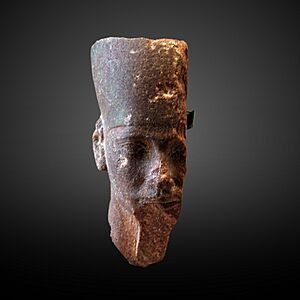

Ancient records like the Turin King List suggest Djedefre ruled for about eight years. However, some discoveries point to a longer reign. A date mentioning the "11th cattle count" was found on a stone block from his father Khufu's boat pit. In ancient Egypt, a cattle count was often done every year or every two years to count wealth for taxes.
This "11th cattle count" suggests Djedefre might have ruled for at least 11 years, or even 22 years if the count happened every two years. Many experts now believe he ruled for around 11 years.
Recent excavations at Djedefre's pyramid also support a longer reign. They show that his pyramid was actually finished. This means he likely ruled long enough to complete such a large building project.
Djedefre's Pyramid Complex
Djedefre chose a new location for his pyramid, building it at Abu Rawash. This site is about 8 kilometers (5 miles) north of Giza. It's the northernmost part of the ancient burial grounds near Memphis.
For a long time, people thought Djedefre's pyramid was unfinished when he died. But recent digs from 1995 to 2005 have shown that it was indeed completed. The pyramid looks ruined today because it was heavily plundered for its stone in later times, especially during the Roman period. Its closeness to Cairo also meant it was affected by modern building.
Some experts believe that a sphinx of Djedefre's wife, Hetepheres II, was part of his pyramid complex. This might have been the very first sphinx ever made. In 2004, an Egyptologist named Vassil Dobrev suggested that Djedefre might have been responsible for building the famous Great Sphinx of Giza in the image of his father, Khufu.
Because the pyramid at Abu Rawash is in such poor condition, only small parts of Djedefre's burial complex have been found. The basic layout of his mud-brick temple was traced on the east side of the pyramid. His pyramid causeway, a path leading to the temple, ran from north to south, which was unusual for the time. No valley temple, usually found at the end of the causeway, has been discovered yet.


